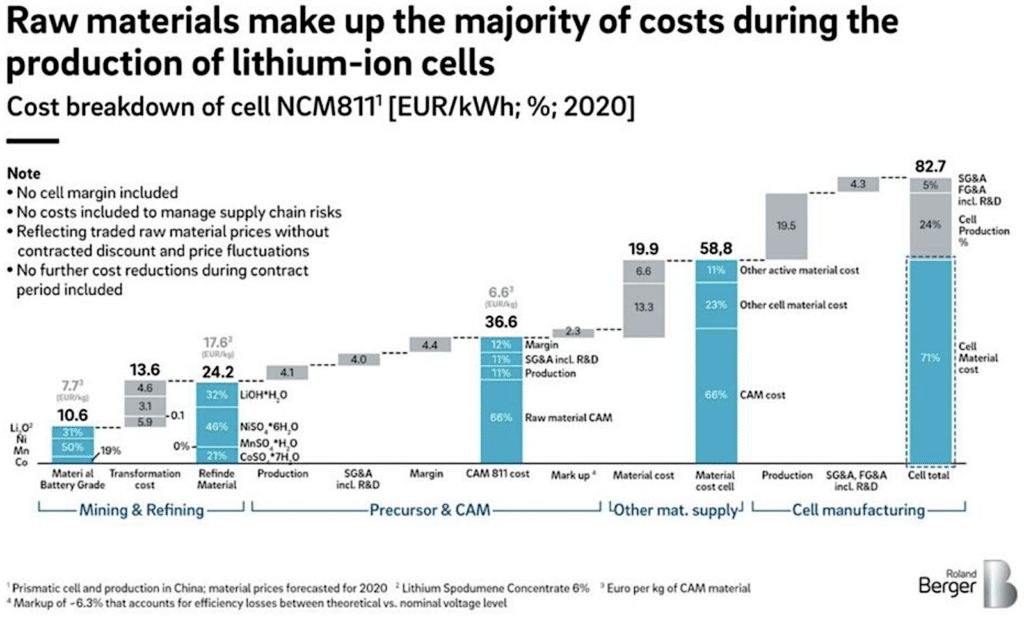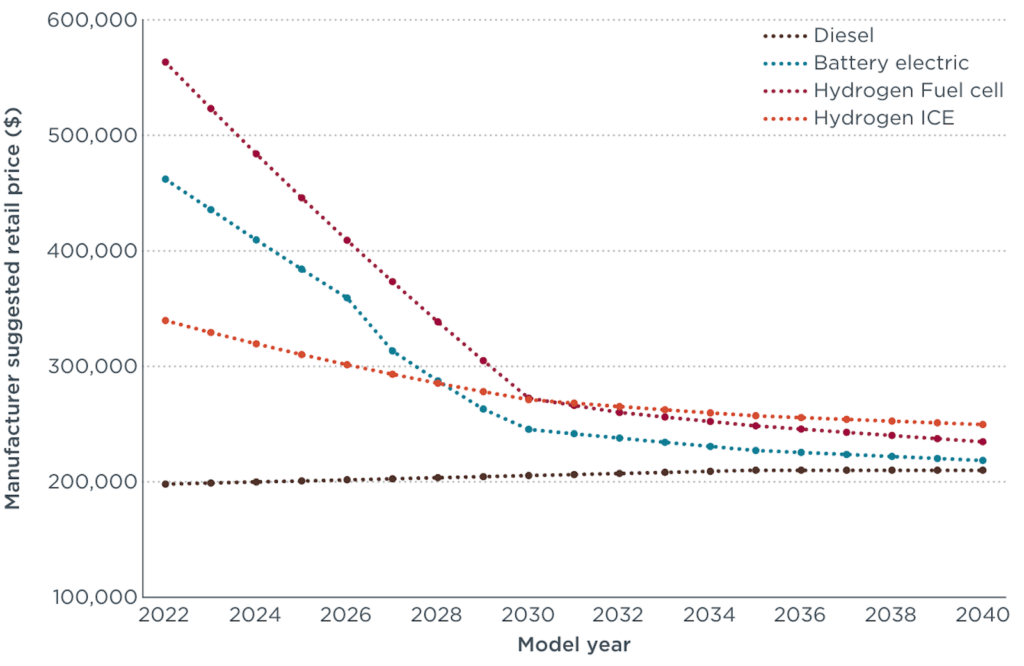Batteries are the most significant cost factor in battery electric vehicles (BEVs). According to one report from 2020, the average price for a battery pack was reported at $137 per kWh. However, from 2008 to 2022, the cost of lithium-ion battery packs saw a dramatic decrease of 89%, thanks to advancements in battery technology, chemistry, and increased production scales, as noted by the Department of Energy’s Vehicle Technologies Office. Despite these advancements, raw materials still account for about 70% of lithium-ion battery production costs. Prices for these materials are expected to stabilize, which means significant reductions in battery costs are not anticipated in the near term.

The cost of these batteries is a primary reason why BEVs cost nearly twice as much as diesel-powered trucks. However, projections from the International Council on Clean Transportation (ICCT) suggest that the price gap could narrow significantly between 2026 and 2027. This is attributed to the development of a megawatt charging network, which will allow for the use of smaller batteries under the assumption that trucks can recharge during operational hours.

However, as with diesel trucks, it is important to look beyond the initial purchase price of a battery electric truck to the total cost of ownership over the life of the vehicle. Part of looking at the total cost is looking at what happens to the battery after it is no longer viable as a power source for a commercial vehicle.
However, when evaluating the cost of a battery electric truck, it is crucial to consider the total cost of ownership over the vehicle’s lifespan, not just the initial purchase price. After a battery’s performance declines to about 80% of its original capacity, it may no longer be suitable for powering a truck but can still serve as an effective power storage solution at charging stations. This concept of battery repurposing is supported by Volvo, which suggests that a truck’s battery could be “every bit as useful and productive” in its second life as it was in its first.
Volvo Energy executives, including Elisabeth Larsson, are developing comprehensive plans to maximize the use of these resources. According to Transport Topics, Larsson emphasized the importance of maximizing the use of extracted minerals and produced resources. Moreover, components like lithium, cobalt, and nickel can be recycled once their usability as a secondary power source wanes, supporting a burgeoning recycling industry as more BEVs enter the market.
The life cycle management of batteries is intricate. When designing electric vehicle charging infrastructures, consider the potential second life of vehicle batteries in powering your fleet. Volvo Group’s Peter Granqvist highlights the delicacy required in handling batteries, likening it to “carrying little babies,” and stresses the need for intelligent control systems to extend battery life.
Given these complexities, partnering with a Charging-as-a-Service provider can reduce the financial risks associated with BEVs and enhance overall cost-effectiveness. They can offer expert solutions in battery management that not only extend battery life but also ensure batteries are repurposed effectively.
Get in touch with Electrada to understand how our approach to Charging-as-a-Service, 360 CaaS, can energize your fleet and maximize the value and utility of your vehicle and its battery.



